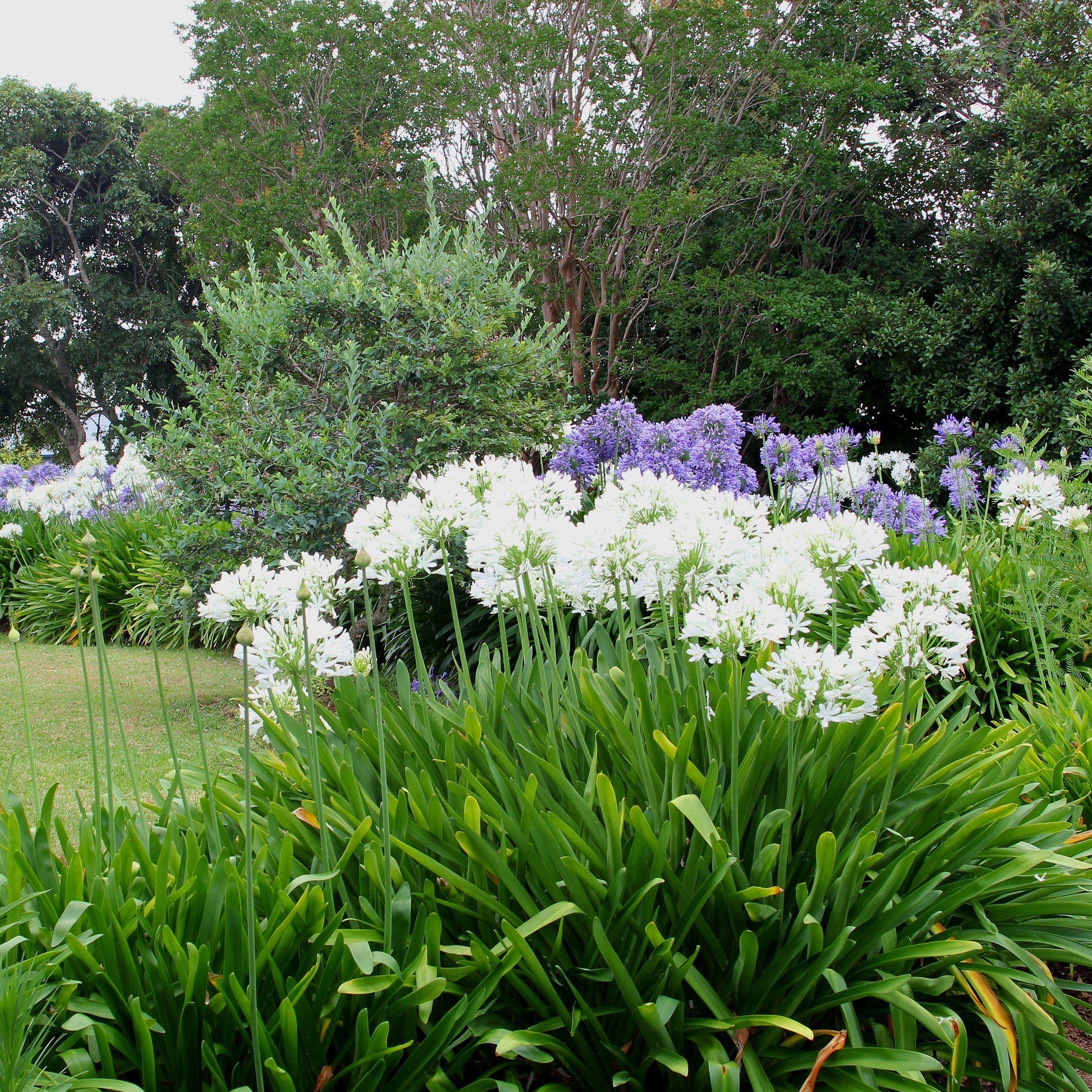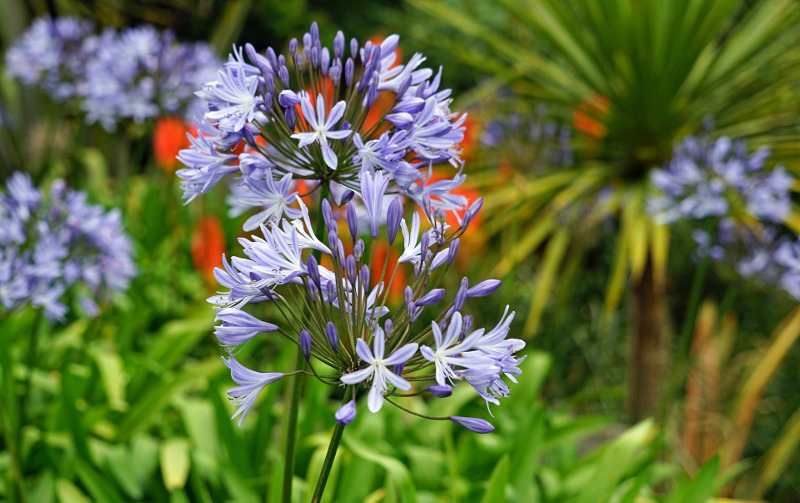Mastering the Art of Agapanthus Care: Necessary Steps for Healthy And Balanced Development and Vivid Blossoms
In the realm of horticulture, the cultivation of agapanthus stands as a fulfilling undertaking for those who seek to support these sophisticated flowering plants. From selecting the right selection to mastering trimming methods, the trip towards growing prospering agapanthus plants is multifaceted and holds the key to unlocking the complete capacity of these botanical treasures.

Picking the Right Agapanthus Selection

When choosing the appropriate Agapanthus selection for your yard, take into consideration aspects such as climate suitability, bloom color, and growth habit. Agapanthus, frequently called Lily of the Nile or African lily, is available in a range of colors ranging from tones of purple and blue to white. Pick a flower shade that matches your existing yard combination to create a harmonious landscape. Additionally, think about the environment in your region to make sure the Agapanthus range you choose can thrive in your particular conditions. Some varieties are extra forgiving of chilly temperature levels, while others favor warmer environments. Understanding the development routine of different Agapanthus varieties is essential for appropriate positioning within your garden. Some selections have a clumping development practice, ideal for boundaries or containers, while others have an even more spreading nature, ideal for ground cover or mass plantings. By carefully assessing these factors, you can select the perfect Agapanthus selection to improve the appeal of your garden.
Suitable Planting Conditions
Taking into consideration the ideal ecological requirements is essential for effective Agapanthus growing. Agapanthus plants are delicate to cool temperature levels and should be safeguarded from frost throughout wintertime months.
To guarantee healthy and balanced growth and lively blossoms, plant Agapanthus bulbs at a deepness of concerning 2-4 inches and space them 8-12 inches apart. Adding raw material, such as garden compost, to the soil can boost drainage and fertility, advertising robust origin development. Mulching around the base of the plants aids maintain moisture and reduces weed growth. Routine watering is critical, specifically throughout the expanding period, to maintain the dirt continually wet yet not waterlogged.
Watering and Fertilizing Tips
Keeping proper dampness degrees and supplying vital nutrients are vital aspects in the treatment routine for Agapanthus plants. When it comes to watering Agapanthus, it is important to strike a balance. These plants prefer continually wet soil yet are prone to root rot if overwatered.
Fertilizing Agapanthus is necessary for promoting healthy development and prolific flowers. Apply a well balanced plant food, such as a 10-10-10 formula, in the very early springtime as brand-new growth arises. Repeat this application every 6-8 weeks moved here throughout the expanding season. Stay clear of extreme fertilizing, as it can lead to lavish foliage at the cost of blooms. Always comply with the manufacturer's guidelines for proper dilution and application approaches. By adhering to check it out these watering and feeding tips, you can ensure your Agapanthus plants grow and create lively, lasting blossoms.
Pruning Techniques for Agapanthus
Pruning Agapanthus plants at the suitable times and with proper methods is vital for keeping their wellness and advertising optimum development and flowering. The optimal time to trim Agapanthus is in late winter or very early spring before new development arises.
For flowered stems, wait till the blooms have perished and after that cut them back to the base. This not only tidies up the plant's look yet likewise motivates the growth of brand-new blossom buds. Deadheading invested flowers can likewise redirect the plant's power right into generating even more flowers as opposed to setting seeds. Nonetheless, if you wish to accumulate seeds for breeding, leave some flowers to dry and mature on the plant.
Keep in mind to make use of clean, sharp devices to make specific cuts and lower the risk of introducing illness. Agapanthus. Routine pruning will certainly assist keep your Agapanthus looking healthy and balanced and cool while making sure an abundant display of gorgeous blooms
Managing Typical Parasites and Illness
After guaranteeing proper trimming methods for Agapanthus, it is vital to address typical insects and conditions that can impact the wellness and vitality of these plants. Agapanthus plants are usually hardy yet can still succumb to certain problems. One common bug that affects Agapanthus is the Agapanthus gall midget. This tiny, orange fly lays its eggs in the vegetation, resulting in altered growth and blossom buds that stop working to open up. To fight this parasite, prune and damage any type of damaged plant components and think about using insecticidal soap.
Additionally, Agapanthus plants can suffer company website from root rot if they are planted in improperly draining pipes dirt. By being alert and taking timely action against diseases and pests, you can assist your Agapanthus plants flourish and create dynamic flowers. Agapanthus.

Verdict
To conclude, understanding the art of agapanthus care involves selecting the right selection, giving suitable planting problems, appropriate watering and fertilizing, suitable pruning strategies, and addressing typical bugs and conditions. By complying with these necessary steps, you can make certain healthy and balanced growth and vivid flowers for your agapanthus plants. Keep in mind to routinely check and maintain your plants to advertise their general health and durability.
To ensure healthy and balanced growth and vibrant flowers, plant Agapanthus light bulbs at a deepness of concerning 2-4 inches and area them 8-12 inches apart. By following these watering and fertilizing tips, you can guarantee your Agapanthus plants prosper and create vibrant, durable flowers.
One usual bug that affects Agapanthus is the Agapanthus gall midget. Additionally, Agapanthus plants can experience from origin rot if they are grown in badly draining pipes soil. By adhering to these necessary steps, you can make sure healthy development and vibrant flowers for your agapanthus plants.